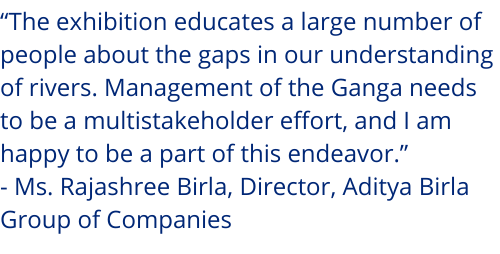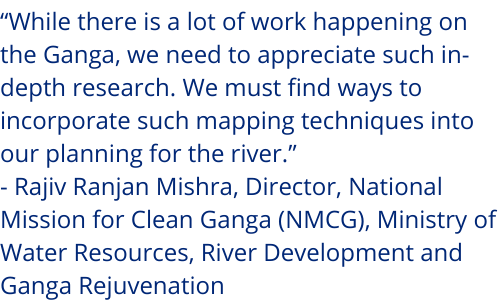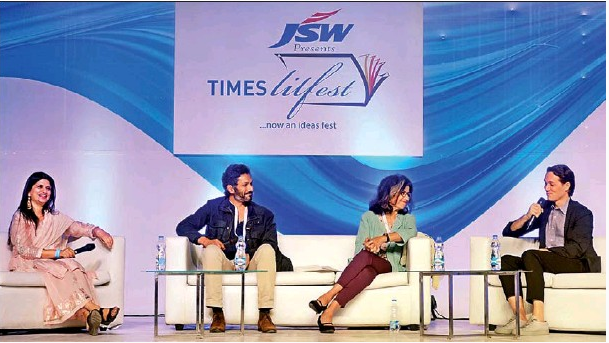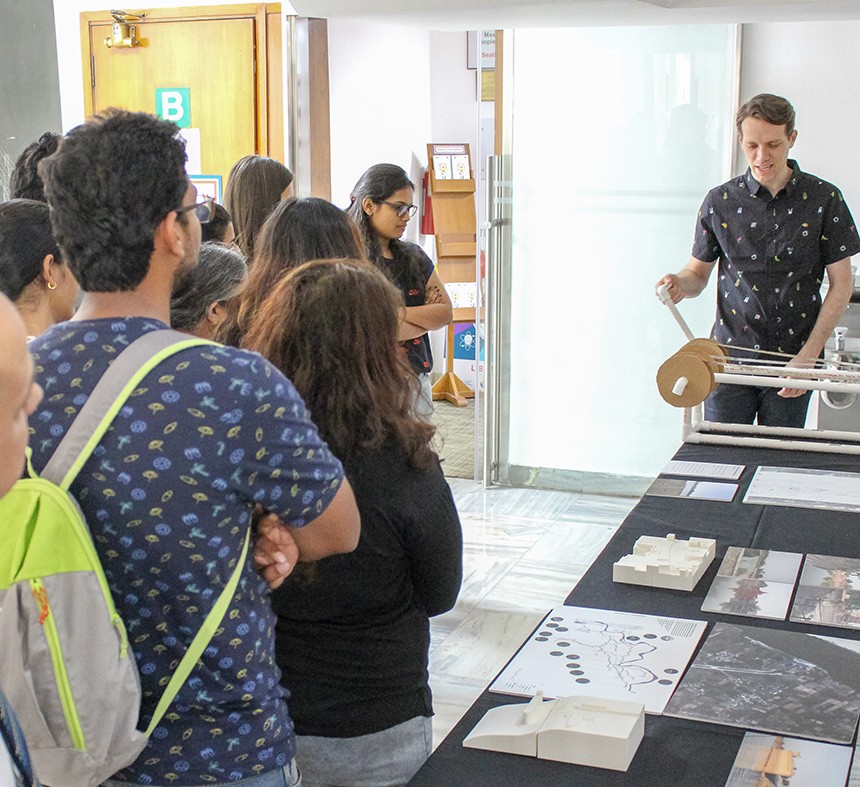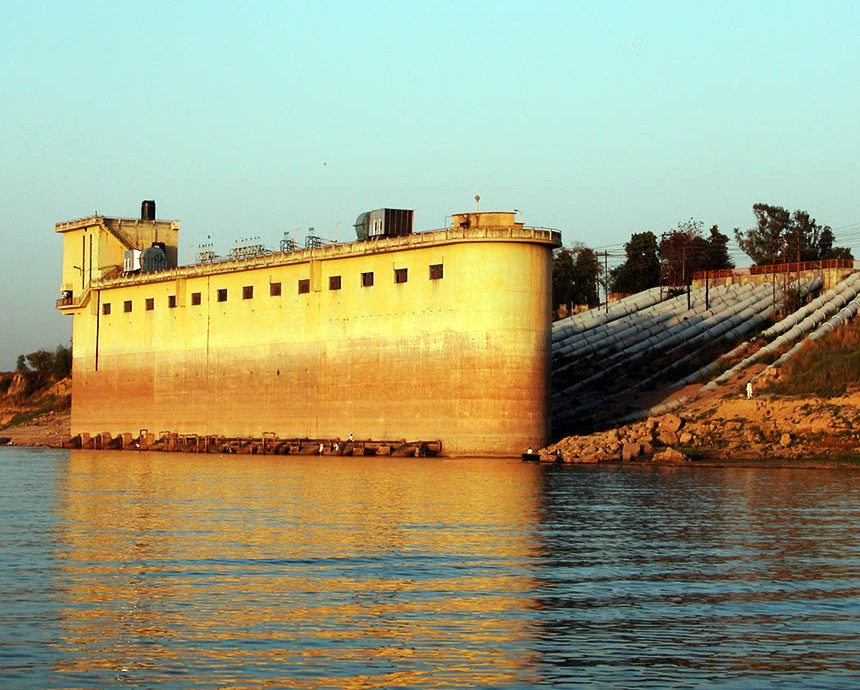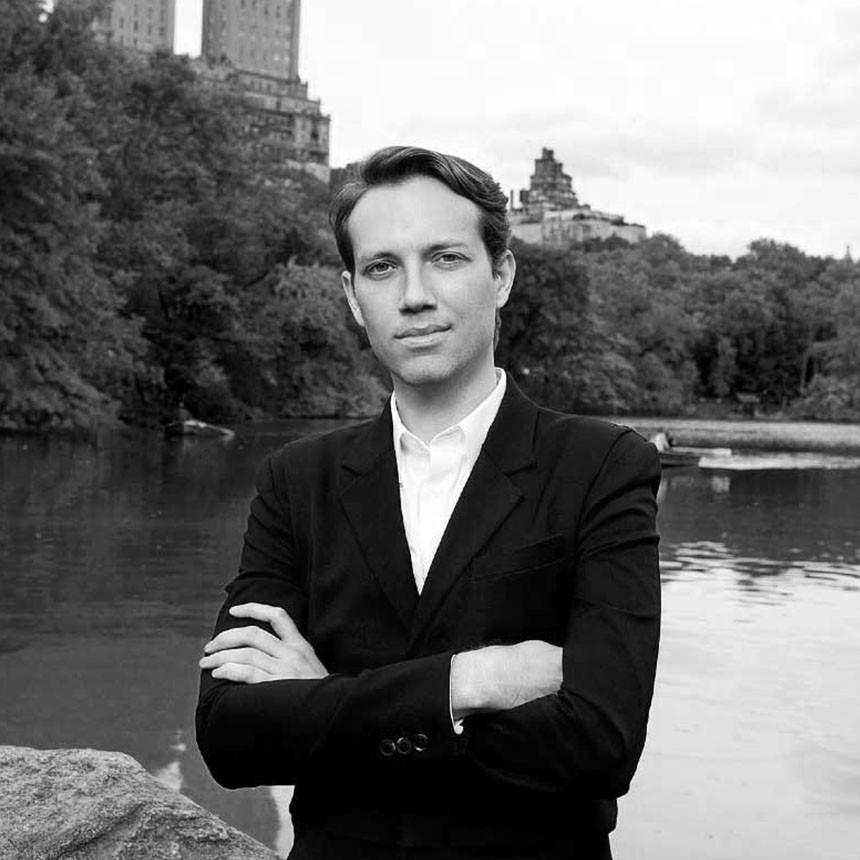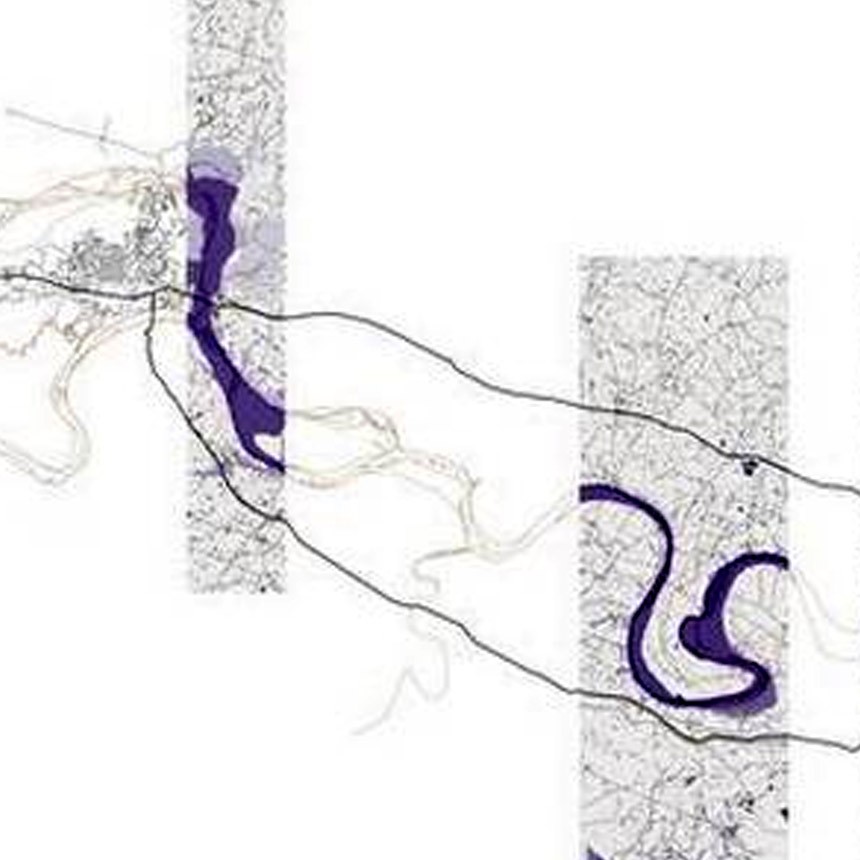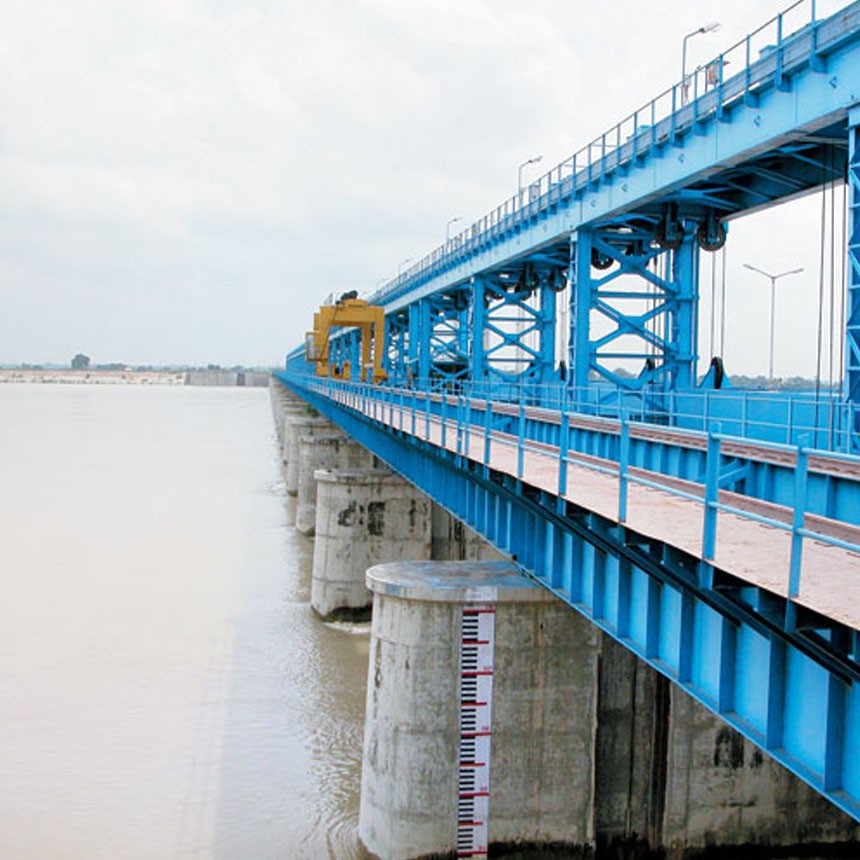MAPPING THE RIVER GANGA
Columbia Global Centers | Mumbai’s 2016-2018 project on the River Ganga, supported by a grant from the Ford Foundation and the Aditya Birla Group, aimed to raise public awareness and promote informed decision-making on one of the most densely populated river basins in the world. The project was based on the work of Anthony Acciavatti, Adjunct Assistant Professor at the Graduate School of Art, Architecture and Planning at Columbia University. Dr. Acciavatti carried out the first systematic study and comprehensive mapping of the infrastructural transformation of the Ganges River Basin to understand how human intervention and engineering have shaped its water management and use. Read more
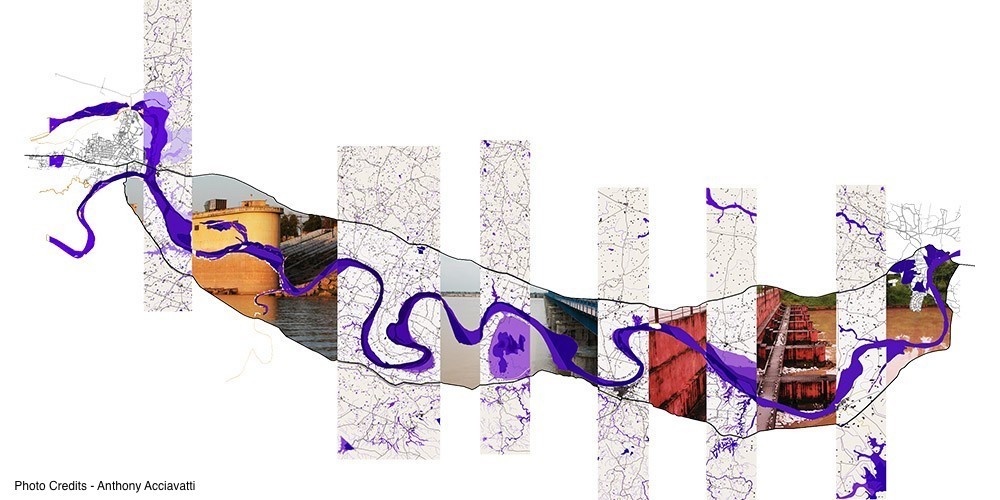
Project Activities
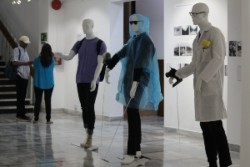
Exhibition
Columbia Global Centers | Mumbai successfully designed, produced and partnered with key institutions to present the exhibition, The River Ganga, India’s Iconic Water Machine, at the Nehru Science Center in Mumbai from August 18-27, 2017, The American Center in New Delhi from April 19-21, 2018 and at the National Institute of Hydrology (NIH) at Roorkee from April 25-26, 2018. The exhibition was a curated excerpt of Dr. Acciavatti’s systematic, decade-long mapping of the basin’s infrastructural transformation that resulted in more than 25,000 photographs, 15 sketchbooks’ worth of drawings, 1,000 journal entries, and 350 original charts. It reached faculty and students from over 40 leading academic institutions including the Sir JJ College of Architecture, IIT Bombay, IIT Delhi, IIT Roorkee, University of Mumbai, St. Xavier’s College, NMIMS School of Design, Kamla Raheja Vidyanidhi Institute for Architecture and Environmental Studies, School of Planning and Architecture, Delhi University, the Sushant School of Art and Architecture and the Roorkee Institute of Technology, and also leading water civil society organizations and corporates working in the water sector.
Watch the Video
____________________________________________________________________________________
Policy Outreach
The project engaged multiple government agencies as participants in events, including the Government of Delhi, NMCG, Wetlands International South Asia, Council on Energy, Environment and Water and UN Habitat. Dr. Acciavatti also led training sessions for mid-career administrators at the Lal Bahadur Shastri National Academy of Administration, Mussoorie, for policymakers at the National Mission for Clean Ganga (NCMG), and hydrologists at the NIH, providing them an in-depth understanding of the environmental heritage of the Ganga, the dynamic conflicts of water use, and the changes to the landscape due to the monsoon and human intervention.
____________________________________________________________________________________

Public Awareness Programs
In addition to three inaugural lectures by Dr. Acciavatti at the exhibition venues, Columbia Global Centers | Mumbai organized two panel discussions, a film screening, and a webinar as part of the project. The panels included eminent policymakers and water experts such as Madhav Chitale, Former Member, National Ganga River Basin Authority, Professor Vinod Tare, Founding Head of the Centre for Ganga River Basin Management and Studies, Indian Institute of Technology Kanpur, and Ranjan Mishra, Director, NMCG. The Center organized a workshop on data visualization for environmental change led by Dr. Acciavatti in New Delhi with a view to strengthening and sharpening the ways in which data on water is collected and interpreted.
Project Directors:
Upmanu Lall, Alan & Carol Silberstein Professor of Engineering and Director, Columbia Water Center
Ravina Aggarwal, Director, Columbia Global Centers | Mumbai

Anthony Acciavatti is the Daniel Rose (1951) Visiting Assistant Professor for Architecture at Yale University. He is a historian, cartographer, and architect and has a Ph.D. from Princeton University. His most recent book, Ganges Water Machine (2015), is the first comprehensive mapping and urban history of the Ganges River Basin in over half a century. He spent a decade hiking, driving, and boating across the Ganges in order to map it and to understand the historical conflicts over water for drinking, agriculture, and industry. Combining fieldwork with archival research, the book is an atlas of the enterprise to transform the Ganges into the most hyper-engineered landscape in the world. In 2016, Ganges Water Machine was awarded the 2016 John Brinckerhoff Jackson Book Prize. His work has on the Ganges has been supported by a J. William Fulbright Fellowship as well as grants and fellowships from the Ford Foundation and Harvard University. A founding editor of Manifest: A Journal of American Architecture and Urbanism, he has also written for The New York Times, Cabinet, Indian Express, Architectural Design, and Topos among other places. He has worked as an architect in Europe, South Asia, and North America and is a principal of Somatic Collaborative in New York. He has taught at Princeton University, at the Graduate School for Architecture, Planning, and Preservation at Columbia University, as well as the Rhode Island School of Design.
